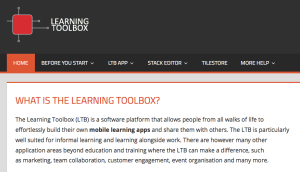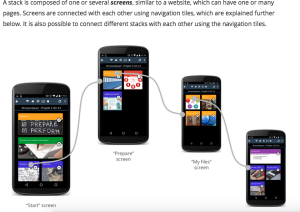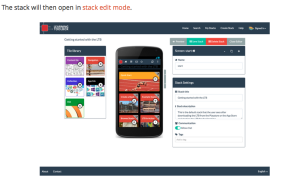Revisiting “Learning about politics” project – Part Four: The continuing story of refugees and migrants (2011 and now)
In my three previous blogs I have worked with a series of posts that revisit the European project “Learning about politics” in which I was the ITB partner in 2010 and 2011. In the first post I discussed the project experience as a whole and presented some thoughts on the key activities. In the second post I look at some ‘hot issues’ in the German (and international) politics in 2011 and what has happened since then. In the third post I discussed some themes raised by German vocational school teachers with whom I worked in the project. In this final post I will have a look at a story that our group developed in the Politics Spring School 2011 – and which I followed up afterwards as a contribution to the Politics project. It so happens that the theme – integration of migrants and refugees – was a hot topic in 2011 and even more in 2016.
Making the initial story at Politics Spring School April 2011
As I have told in my first blog of this series, the Greek partners of the Politics project organised a joint Comenius and Grundtvig course with the name “Politics Spring school” to support the project work and as a free event for other interested participants. One part of the program for the project-oriented participants (mainly teachers on Comenius course) was to work in trans-national groups and to create a joint story based on each one’s individual inputs. In our group we had the Italian participant Valentina, the Norwegian Lisa (expatriate living in Brussels) and myself (Finnish expatriate in Germany).
Together we came up with a story of three observers visiting different places and looking, how the local people receive newcomers or how people from different origins get along with each other and their new environment. Our first station was the isle of Lampedusa, where we saw a video documenting the local people letting the refugees (who came with boats to harbour) that they were not welcome. Our second station was the intercultural environment in Brussels where we saw pupils of the international school communicating with each other in several languages – and small children of bilingual families talking fluently (and in turns) to their parents in their respective languages. Our third station was Berlin where we followed the work of the German-Turkish theatre group ‘Berlin Heroes’ trying to weed violent behaviour out of the relations between boys and girls (and young people with different religion). We also followed the work of the voluntary migrant-based ‘neighbourhood mothers’ (Stadtteilmütter) who visited newly arrived migrants and provided information and support to them in their new environment. So – we documented different kinds of activities and intercultural encounters – from clashes and conflicts to ‘new normality’ and to community initiatives to overcome tensions and provide mutual assistance.
Follow-up with news on refugees heading from Italy to France and Belgium
After the Spring School initiative I felt the need to continue the story with two follow-up threads. Firstly, I felt the need to follow the movements of refugees – in particular those arriving in Italy. At that time the government of Italy felt overwhelmed by the number of refugees – and provided them temporary admission certificates and free access to trains (to move further into the neighbouring countries). As a response, the government of France refused to receive refugees with such documents and introduced border control on the Italian border. At that time I wrote blogs with video documents on the movements of refugees in Italy, their problems at the Italian-French border and on the experiences of those who had made their way up to Brussels (or elsewhere in Belgium). Altogether, these documents showed that the refugees had not had an easy ride at any of the parts of their journeys.
Follow-up with stories on the integration of Turkish migrants in German society
Parallel to this I felt the need to look more closely at the integration of the earlier waves of migrants – such as the Turkish Gastarbeiter in Germany and their descendants. I was very much inspired by the new film “Almanya – Willkommen in Deutschland” that gave a humorous picture of three generations of migrant family and their experiences in Turkey and Germany between 1970 and 2010. But I also took note of reports on the experiences of German-born German-Turks ‘returning’ to Turkey to start working in the country of their ancestors (and being perceived as ‘Germaners’ – Almancilar, Deutschländer). Therefore, I had discussions with mixed couples – Germans married to Turks and with experiences in living in both countries. After these sessions I wrote follow-up blogs to the story that was started at the Spring School.
Movements of refugees and reactions in receiving countries – 2011 and 2015/2016
Sadly enough, the results of our work with this story and the follow-up threads are no longer available in public domain. Archiving of old project websites is not an interesting task for former partner organisations. Nevertheless, these experiences served as a preparatory phase for encountering the more recent wave of refugees coming to EU member states in 2015 and 2016. Whilst government policies wavered between a permissive ‘welcoming culture’ and strict ‘fencing the trespassers out’ attitude, the citizens and NGOs tried to provide assistance and support. Yet, rather soon there was a backlash of xenophobic and hostile reactions as well.
For us working with social and educational projects this is not only a matter of observing what is going on. From this perspective I have found it interesting that the construction sector training centre Bau-ABC (application partner in our EU-funded Learning Layers project) has also been supporting the integration of refugees and the placement of refugee children to appropriate education provisions. Moreover, we have been thinking, how the newly developed Learning Toolbox could support the social and educational integration of refugees. These questions go clearly beyond the current project. But we know that there is a lot of potential – and that there is a lot of work to be done with these issues.
More blogs to come …



